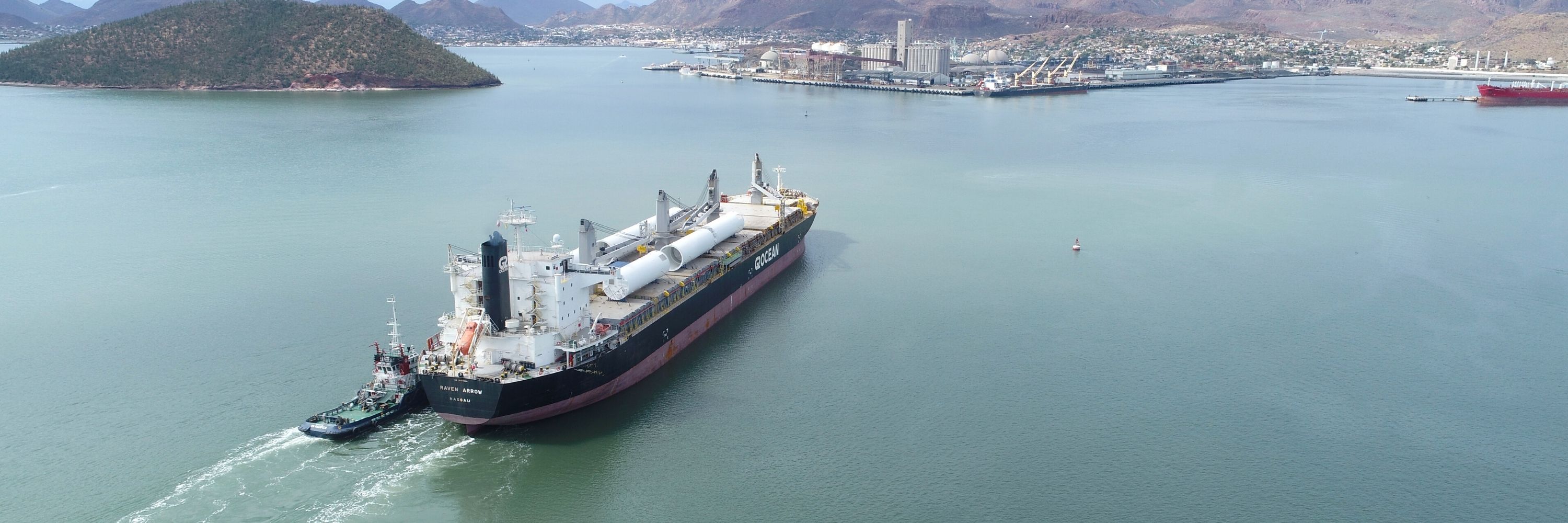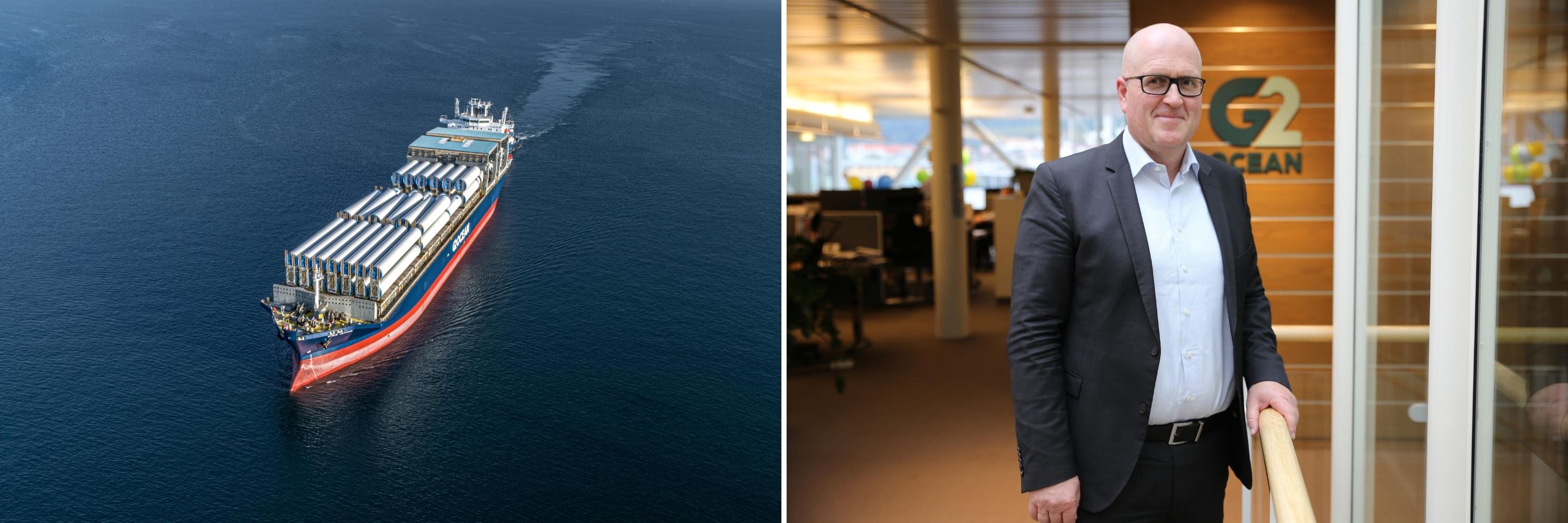All eyes on 2021

Growth in the Association of Southeast Asian National, or ASEAN, region is expected to slow sharply to 2.2 percent in 2020 as a direct reaction to the pressure of Covid-19 on global economies, according to the Asian Development Bank, or ADB.
With that somber 2020 projection in mind, project cargo and breakbulk players in the region may find solace in the ADB’s forecast of 6.2 percent growth rebound in 2021. But will that 2021 growth materialize? Not all stakeholders agree with the bank’s optimistic forecast.
“The Covid-19 pandemic is causing volatility and uncertainty all over the world. Under the assumption that the various countries manage to restart their economies while handling the virus in a controlled manner, it should be realistic to expect a rebound of the regional and global economy in the second half of 2020 and during 2021,” G2 Ocean’s vice president of project cargo, Leif Arne Strømmen told Breakbulk.
He adds, however, that it is important to distinguish between project cargo belonging to capital investment projects and regular breakbulk, as the Covid-19 impact differs. Project cargo for capital investment projects are not directly linked to the changes in the ADB predictions. “These volumes will be directly linked to ongoing, planned and future capital investment projects, and are, in a greater extent, related to pricing of commodities like oil, gas, electricity and various minerals, in addition to planned investments into governmental infrastructure. For breakbulk not linked to capital investments projects, such as steel or aluminum to the automobile industry and other consumer-driven industries, there certainly are more direct implications reflected in the ADB predictions,” Strømmen said.
Slow Recovery Projected
For breakbulk, excluding project cargo, Strømmen expects to see a slow recovery in the market during the third and fourth quarters of 2020.
“We are also expecting this to continue into 2021, depending on how the next three to four months develop.”
In addition, he anticipates increased governmental capital investments into infrastructure to create new jobs, and new governmental capital investments into renewable energy to utilize the crisis to speed up decarbonization. As an example, the European Union has reshaped its Green Deal into a recovery package, with huge support for renewables, green hydrogen and electric vehicles. This is expected to have a positive impact on Asia and the involved manufacturing companies.
Charles Zhang, marketing manager at Winning Shipping in Qingdao, agrees with the ADB’s prediction of an economic slowdown in 2020, but believes there is still a question mark on whether the 2021 recovery will be as the bank predicts. “It very much depends on the measures the different governments are taking and the development of medical means, for instance when the vaccine will be developed successfully. Personally, I think it is still too early to say whether the expansion of Covid-19 is under control globally.”
Teik Poh Goh, managing director of Global Maritime Talent, cautions that ADB’s projections for 2020 may actually be too conservative – he expects full-year figures to be below 2.2 percent. “In my view, it is just a handful of countries that can generate growth within their domestic markets, specifically China and India. For the rest of the countries, they will remain hamstrung by their export-focused economies.”
Apart from a handful of key industries that have continued to function such as healthcare, food, and the supply chain, he sees that the rest of the sectors are in the doldrums. Therefore, even if borders reopen from the middle of the year, the accruing job losses will “curtail any semblance of a return to normalcy in buying and consumption patterns, for quite some time to come,” he said.
Covid-19 has also expedited structural changes in how employees and companies work and in the future of the workplace. “This is a double whammy that we don’t need,” Goh said. “The outcome of this is that we may end up seeing a jobless recovery even as things get back to normal. I don’t think that the trade rebound of 6.2 percent in 2021 is likely to take place. My guess is that it would be more in the 4 percent region if all goes well.”
Strømmen agrees with that stance, describing the ADB 2021 projection as “over-optimistic.”
“It is hard to say if projects will boom in 2021 since investors will be more conservative or say the government investors will be short of money. And if the restructure of the global supply chain that is claimed by developed countries such as the U.S. and France comes true, the situation might be even worse for the automobile manufacturers, mobile phone factories, and similar plants located in China, Vietnam and Malaysia back to Japan, the U.S. and Europe. From the opposite point of view, this may bring some business for breakbulk and project cargo transportation.”

Leif Arne Strømmen manages the Project Cargo services at G2 Ocean.
Commodity Price Freefall
In its forecast, the ADB also forecast sharp and protracted declines in commodity prices, a factor that will have a direct impact on the breakbulk sector. But while Winning’s Zhang expects that dropping commodity prices could affect the confidence of investors in resource development, he notes that investments in resources are dependent on long-term demand. “As long as investment remains steady, the dropping commodity prices won’t affect the transportation sector very much,” he said.
The project cargo sector, however, may not escape unscathed. The record low oil and gas prices over the past few months have already resulted in major cuts in both operating and capital expenditure among the larger oil and gas producing companies, delaying and postponing final investment decision of upcoming and future capital investment projects.
“Governmental investments into infrastructure will help the situation,” Strømmen said. “However, the project cargo/breakbulk industry will heavily depend on increased commodity prices to see new capital investment projects being developed.”
There are, he adds, reasons to believe that oil prices will stabilize and continue to increase, with massive cuts in oil production currently taking place and increased demand expected during the second half of 2020 and into 2021. “Still, there will be a time frame where new investment projects are delayed or postponed, leading to temporarily lower project cargo volumes than expected a few months ago.”
Record-low electricity prices in Europe could also spell trouble for the renewables sector. Strømmen said that prolonged low electricity prices might, in the short-term, delay investment decisions of new onshore wind turbine projects, due to reduced cash flow among the energy producers.
Better Protected?
The fact that consignments moved in the project cargo sector require longer-term planning compared with cargoes transported by other sectors means that they might be somewhat insulated from the volatility that other sectors are more exposed to. This is borne out by G2 Ocean’s experience: the carrier has seen a “steady to strong volume” of project cargo throughout the pandemic. These were for capital investments decided before the outbreak.
Strømmen expects volumes to remain strong for the rest of 2020 into the beginning of 2021. “After that, we assume to see the consequences of delayed investment decisions for new projects into oil, gas, power and renewable, mining, as well other segments impacted by reduced demand and reduced commodity prices.”
There are potential opportunities for the breakbulk and project cargo sector if governments initiate public-works and infrastructure projects as a means to address surging unemployment, another driver that could result in sustained if not increasing demand for project cargo transport of components needed for such initiatives.
However, this will depend on the determination of governments and their financial capabilities, Zhang notes.
Some governments in Asia may turn to new or expanded infrastructure projects as a means of limiting unwelcome declines in GDP, with related benefits for the breakbulk and project cargo sector.
So what do the next 18 months hold for the breakbulk and project cargo sector to and from Asia? “Unless we see closures like we have seen in India lately, we expect project cargo volumes from Asia to the Middle East, Europe, North and South America to remain stable for the remaining of 2020 and beginning of 2021,” Strømmen said. “The situation will, certainly, depend on the development of Covid-19, and potential new outbreaks. For breakbulk, we see a decline in volumes of certain commodities related to manufacturing, due to reduced demand and closed or reduced production in the receiving countries.”
Goh brings the focus back to ADB’s report. “I think that the Asian region will fare better than the Americas, Europe and Africa in terms of its ability to resume manufacturing activity earlier than other regions which are now grappling with the onset of Covid-19.” There could, he adds, still be opportunities in 2020 as governments rebuild infrastructure to spur jobs growth.
But with more and more governments turning to the International Monetary Fund for financial support, the number of governments with the funds available to prop up infrastructure growth is dwindling, and with it the available forward support for the project cargo and breakbulk sector.

G2 Ocean recently shipped six pieces of Royal Smit power transformers – each of them weighing over 150 metric tons – from Antwerp, Netherlands to Houston, United States.
